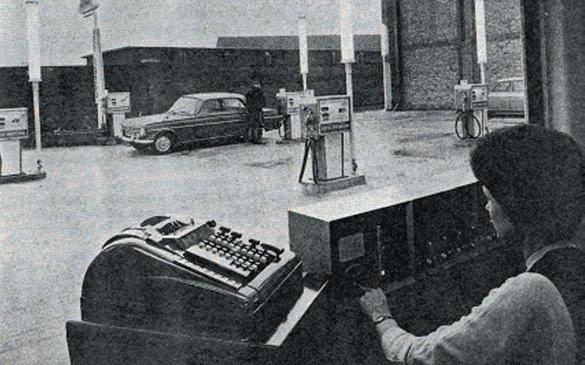
3 minute read
Business Manager’s Report
The APEAcelebrates 50 YEARS of Petroleum Administration
By Jamie Thompson
Advertisement
50 years ago in April 1958 a group of local authority officers in the West Midlands formed the West Midlands Petroleum Acts Administration group. At that time there were sixty-six local authorities in that area responsible for administering the Petroleum Acts, and some 1500 nationally.
The need for this organisation grew up following the publication of the Home Office Model Code in 1957 and the necessity to both understand and apply this code uniformly across the region. Many of those early participants came from a variety of local authority disciplines, building inspectors, weights and measures, engineers and surveyors, public health inspectors with some fire officers and even petroleum officers. Officers from Solihull, Walsall, Worcester, Kidderminster, Wolverhampton, Birmingham and Shrewsbury formed that first council.
They quickly recognised that they may well need the input from industry and introduced a membership group called Associates, which meant that industry members could contribute to the Association - but in those days could not vote.
The first Bulletin was produced in 1962 four years after the Association was formed and has continued to be the main voice of the Association and its members and continues to inform, and keep us up to date with technical articles.
After a few years other authorities outside the West Midlands saw the value of this organisation and in 1965 the group went national and became the Association for Petroleum Acts Administration (APAA) and at the AGM in 1965 branches were formed in the West Midlands, East Midlands, Oxfordshire and Surrey, Yorkshire, and Tees Side.
The value of training in those early days was soon recognised and a midweek residential school was set up at Attingham Park in Shrewsbury to discuss the codes and important safety aspect of petrol station construction, and this soon became almost a must for any budding petroleum officer and ran for several years. These were always oversubscribed and in 1965 there were 140 applications for just 60 places!
I certainly enjoyed attending this school as a young inspector in 1966 and met many like-minded students to learn about petroleum in the wonderful surroundings of the National Trust property Attingham Park, which was organised by Bob Holdaway.
So we began to see the formation of the Association more on the lines as you see it today, an organisation supplying an information need, and a platform to discuss common interests, also supplying training and now with branches not only in the UK but in Europe also.
The first Association trips to Europe began in the 1960’s with visits to a refinery in France and m o r e famously a visit to Hamburg to see the first self-service sites in Germany and the various stories I heard led me to believe that the early membership had a great time.
The Association membership grew to around 1500 and it was mostly local petroleum licensing authorities (PLA’s) that joined with only a few individuals.
Many forecast the demise of the Association due to the 1974 local government reorganisation when the numbers of Petroleum Licensing Authorities were reduced drastically from 1500 to 69.
Although the changes became more effective for petroleum enforcement, it proved to be a very difficult time for the Association over the next few years. John Frid was a very able Hon Secretary at the time he worked hard and the membership gradually grew from a few hundred, as individual members joined instead of the local authorities. It was also decided at an AGM in St Albans to try and increase membership and widen our base so we chose to rename the Association the Association for Petroleum & Explosives Administration (APEA) as it was thought many of those involved in explosive and fireworks licence would help swell membership. An important decision was also made to allow the former associate members to become full members and therefore have the voting rights we all enjoy today.
Early Bulletin Photographs
Here a discussion on the merits of the first self service site in Colchester The first Bulletins were typed and produced on Gestetner duplicating machines and eventually by the Local Authority printing press to a very high standard. Many of the early editions were available in bound copies but after the 1974 reorganisation money was in short supply and as Editor in 1979 I was limited to around £200 for one edition and we had to cut corners by typing each page (no computers in those days) and getting it photographed onto a plate for printing. After 23 years as Editor perhaps the best investment we made during that time was to employ Jane who now manages everything on her computer enabling the Editor much more time to seek articles and edit.










